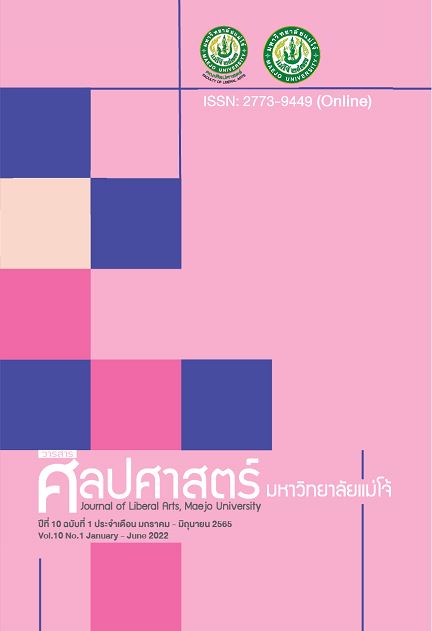Effects of Square Hopscotch Exercise Program on Body Composition and Quality of Life in Overweight Children
Main Article Content
Abstract
The purpose of this study was to examine the effects of square hopscotch
exercise program on body composition and quality of life in overweight children
aged between 10-12 years thirty-eight, were divided into 2 groups, matching
selected as a control group (n=19) and an experimental group (n=19). The control group was assigned to perform activities as normal daily living. The experimental group was participation with 60 minutes, exercise program 3 days a week for 6 weeks. Body composition and quality of life were measured. Data were analyzed using paired t-test to determine the difference between pre-test and post-test. Moreover, independent t-test was used to determine the difference between groups. The result showed that 1) Compared with baseline, the body fat percentage was lower in the experimental group (p<0.05); moreover, the fat free mass and muscle mass were higher (p<0.05). The control group had higher muscle mass than pre-test (p<0.05). The quality of life (parent edition) had higher scores than the baseline in the experimental group (p<0.05).
2) Between two groups, the experimental group had higher in fat free mass
than the control group (p<0.05). The quality of life (children edition) was not
different. However, the experimental group had higher scores in the quality of life (parent edition) than the control group (p<0.05). Discussion and conclusion The square hopscotch exercise program can improve body composition (i.e., body fat percentage, fat free mass and muscle mass). Additionally, the exercise program can improve quality of life in overweight children. Therefore, this exercise program could be an option as an extracurricular activity in school.
Article Details

This work is licensed under a Creative Commons Attribution-NonCommercial-NoDerivatives 4.0 International License.
ต้นฉบับที่ได้รับการตีพิมพ์ในวารสารคณะศิลปศาสตร์ มหาวิทยาลัยแม่โจ้ ถือเป็นกรรมสิทธิ์ของมหาวิทยาลัยแม่โจ้ ห้ามนำข้อความทั้งหมดหรือบางส่วนไปพิมพ์ซ้ำ เว้นเสียแต่จะได้รับอนุญาตจากมหาวิทยาลัยฯ เป็นลายลักษณ์อักษรReferences
กัลยาณี โนอินทร์. (2560). ภาวะน้ำหนักเกินและโรคอ้วนในวัยเรียนและวัยรุ่นไทย. วารสารทหารบก. 18 (ฉบับพิเศษ), 2-8.
วรารัตน์ กาแปง. (2562). ของเล่นเพื่อส่งเสริมพัฒนาการเด็ก ตั้งเต : HOPSCOTCH (ซิกกะแดะ, กระต่ายขาเดียว). สืบค้น 15 มีนาคม 2563 จาก https://wbscort.dusit.ac.th/artefect/file/
ศิริเพ็ญ สมใจ. (2549). วิเคราะห์ต้นทุนและคุณภาพชีวิตของผู้ป่วยธาลัสซีเมียหลังการรักษาโดยการปลูกถ่ายไขกระดูกในโรงพยาบาลจุฬาลงกรณ์ (วิทยานิพนธ์ปริญญามหาบัณฑิต). กรุงเทพฯ : จุฬาลงกรณ์มหาวิทยาลัย.
ศุภวรรณ วงศ์สร้างทรัพย์. (2551). ผลของการฝึกโปรแกรมการละเล่นพื้นบ้านที่มีต่อสมรรถภาพทางกายเพื่อ สุขภาพของนักเรียนชั้นประถมศึกษาตอนต้น (วิทยานิพนธ์ปริญญามหาบัณทิต) กรุงเทพฯ : มหาวิทยาลัยเกษตรศาสตร์.
สาธารณสุข, กระทรวง กรมอนามัย. (2542). กราฟแสดงเกณฑ์อ้างอิงการเจริญเติบโตของเพศชายและเพศหญิงอายุ 5-18 ปี. กรุงเทพฯ : โรงพิมพ์ชุมนุมสหกรณ์การเกษตรแห่งประเทศไทย.
สาธารณสุข, กระทรวง กรมอนามัย. (2557). แนวทางการควบคุมป้องกันภาวะอ้วนในเด็กนักเรียน. สืบค้น 13 มกราคม 2563 จาก https://www.lamphunhealth.go.th/
สำนักงานกองทุนสนับสนุนการสร้างเสริมสุขภาพ. (2561). เด็กไทยกิจกรรมทางกายน้อย แนะคนกรุงหมั่นดูแลสุขภาพ. สืบค้น 29 เมษายน 2563 จาก https://www.thaihealth.or.th/
American College of Sports Medicine. (2018). ACSM's guidelines for exercise testing and prescription: Lippincott. Williams & Wilkins.
Chuensiri, N., Suksom, D., & Tanaka, H. (2018). Effects of high-intensity intermittent training on vascular function in obese preadolescent boys. Childhood Obesity. 14(1), 41-49.
Cox, R. C., & Vargas, J.S. (1966). A comparison of item selection techniques for normreferenced and criterion referenced test. Paper presented at the Annual Meeting of National Council on Measurement in Education.
Demirci, N., Demirci, P. T., & Demirci, E. (2017). The Effect of School-Based Exercise Practices of 9-11 Year Old Girls Students on Obesity and Health-Related Quality of Life. Universal Journal of Educational Research. 5(8), 1323-1331.
Faul, F., Erdfelder, E., Lang, A. G., & Buchner, A. (2007). G* Power 3: A flexible statistical power analysis program for the social, behavioral, and biomedical sciences. Behavior Research Methods. 39(2), 175-191.
Kesztyus, D., Wirt, T., Kobel, S., Schreiber, A., Kettner, S., Dreyhaupt, J., ... & Steinacker, J. M. (2013). Is central obesity associated with poorer health and health-related quality of life in primary school children? Cross-sectional results from the Baden-Württemberg Study. BMC Public Health, 13(1), 260.
Lau, P. W., Wong, D. P., Ngo, J. K., Liang, Y., Kim, C. G., & Kim, H. S. (2015). Effects of high-intensity intermittent running exercise in overweight children. European Journal of Sport Science. 15(2), 182-190.
Lu, K. D., Cooper, D. M., Haddad, F., & Radom-Aizik, S. (2018). Four months of a school-based exercise program improved aerobic fitness and clinical outcomes in a low-SES population of normal weight and overweight/obese children with asthma. Frontiers in Pediatrics. 6, 380.
Morrison, K. M., Shin, S., Tarnopolsky, M., & Taylor, V. H. (2015). Association of depression & health related quality of life with body composition in children and youth with obesity. Journal of Affective Disorders. 172, 18-23.
Shoup, J. A., Gattshall, M., Dandamudi, P., & Estabrooks, P. (2008). Physical activity, quality of life, and weight status in overweight children. Quality of Life Research. 17(3), 407-412.
Sothern, M. S. (2001). Exercise as a modality in the treatment of childhood obesity. Pediatric Clinics of North America. 48(4), 995-1015.
Tompkins, C. L., Soros, A., Sothern, M. S., & Vargas, A. (2009). Effects of physical activity on diabetes management and lowering risk for type 2 diabetes. American Journal of Health Education. 40(5), 286-290.
Varni, J. W., Seid, M., & Kurtin, P. S. (2001). PedsQL™ 4.0: Reliability and validity of the Pediatric Quality of Life Inventory™ Version 4.0 Generic Core Scales in healthy and patient populations. Medical care. 800-812.
Williams, C. F., Bustamante, E. E., Waller, J. L., & Davis, C. L. (2019). Exercise effects on quality of life, mood, and self-worth in overweight children: the SMART randomized controlled trial. Translational Behavioral Medicine. 9(3), 451-459.
World Health Organization (WHO). (2017). Obesity and overweight. Retrieved 6 July 2020 from http://www.who.int/news-room/

